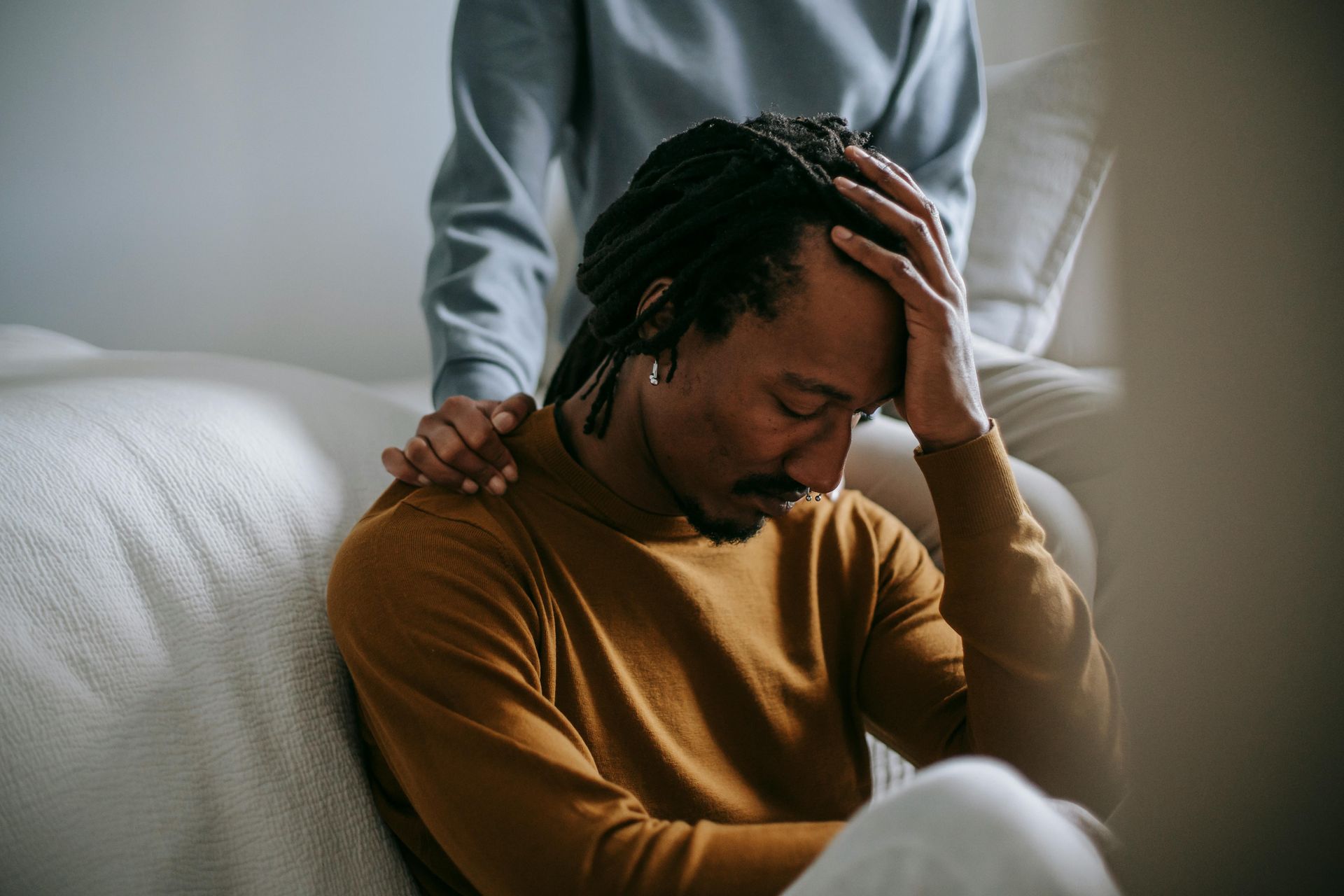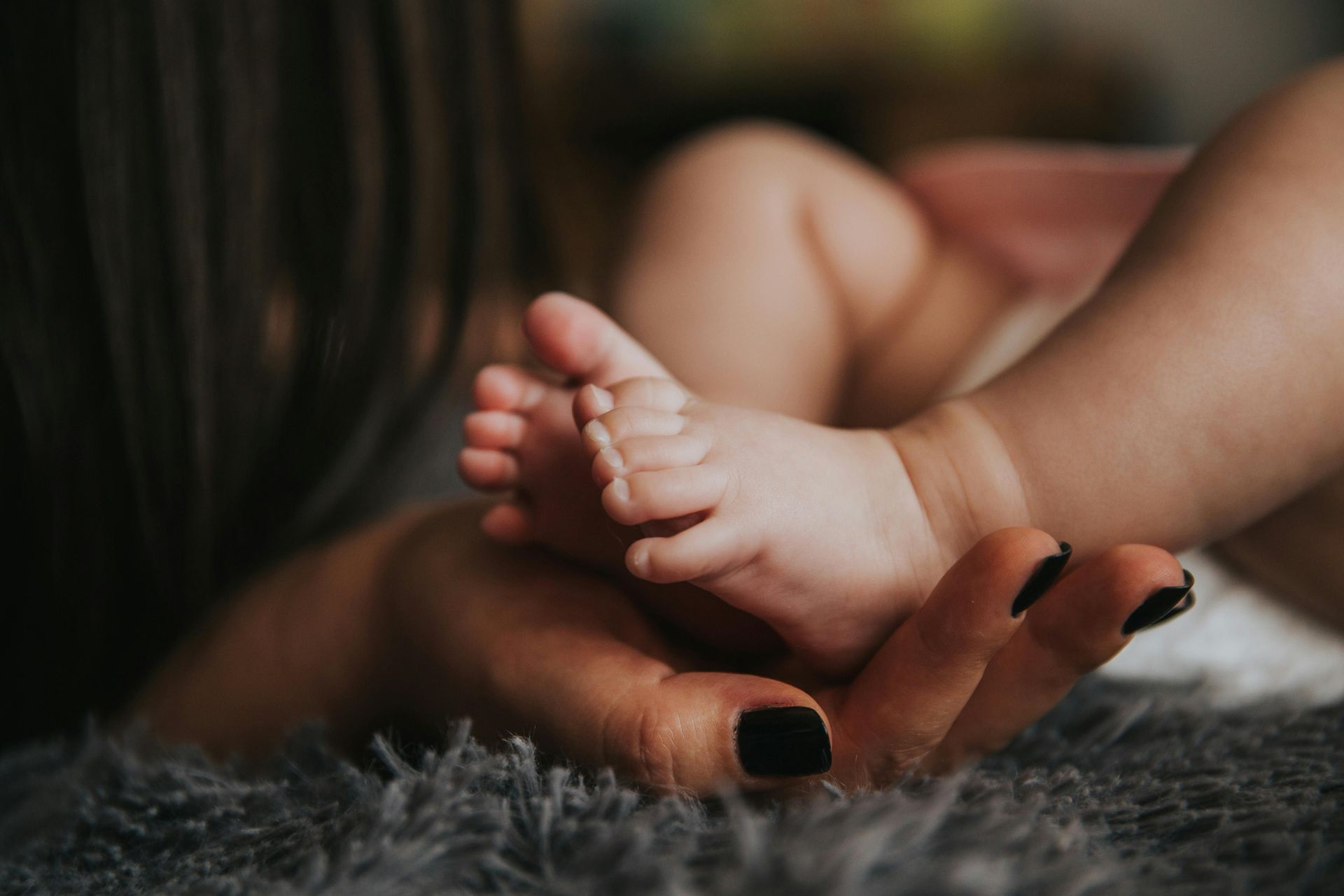M.C. Barrett, PhD • October 17, 2025
Therapy can support your mental health during mourning

What is Grief?
Loss is a universal human experience. Grief is the natural response to a devastating loss, such as death of a loved one, loss of a relationship, or more complex, subtle forms of loss such as the loss of abilities or identities. Even though it is a natural process, grief can feel overwhelming, confusing, or intolerable, and it’s commonly misunderstood. For example, people may believe that grief is the same thing as sadness, that grief is supposed to look a certain way, that grief is just another word for depression, or that grief should only last a certain amount of time. These are all myths!
Natural And Without “Normal”
All humans are subject to various stressful experiences in life, and the loss of a loved one is especially impactful. Grief, which is also called bereavement, is a natural but painful process that occurs after we experience the stressor of a loss. Grief is so impactful that most people experience both psychological and physiological symptoms—grief affects our entire body!
For example, during a typical grieving process, people are likely to experience at least some symptoms that we might associate with anxiety or depression, such as sadness, lack of interest in things we typically enjoy, feeling “stuck” in worried thoughts, and difficulty concentrating. Some people may develop enough symptoms to be diagnosed with an anxiety or mood disorder, but many people experiencing grief have a separate, unique experience of bereavement rather than clinical anxiety or clinical depression.
These psychological symptoms may be accompanied by physiological changes, such as an increase in physical pain like headaches, decreased appetite, increased fatigue, and increased digestive issues. Research has even shown that during grief, our immune system is weakened, making us more vulnerable to illness and less able to heal from sickness or injuries. The degree to which grief manifests as physical symptoms varies widely by person and by each experience of grief.
Grief also varies significantly by culture. For example, some cultures speak very openly about the circumstances of a loved one’s death and their feelings about it, but in other cultures, such details may be seen as deeply private and inappropriate to share with others. Some cultures have very formal or subdued funeral traditions. Others may mourn out loud, with wailing or crying or shaking. Some cultures have lively celebrations of life, such as the public musical processions seen in the second line parades of New Orleans. What is “normal” in grief is highly dependent on cultural variables.
Lastly, grief varies by context, much of which is specific to an individual, resulting in a large variability in grief responses even among members of the same culture or same family. We experience each loss differently, and our experience is shaped by important contextual details like the relationship we had with who we lost, our age, their age, whether the loss was expected or unexpected, and what degree of control we did or didn’t have in the circumstances. Factors like our religious or spiritual beliefs and the amount of social support we have are highly influential. Our own health, both physical and mental, is also part of the context of our grief response. With all of these variables, there simply isn’t a “one size fits all” when it comes to grief.
Grief Stages and Grief Cycles
You may have heard that there are “stages” of grief. This idea, called the Kübler-Ross model, originally proposed five distinct “stages” of grief, anticipated to occur in a particular order. WE now understand that these stages more commonly happen as a cycle of phases rather than a linear progression. This change in language reflects increased clinical research about grief, which has revealed an important truth: grief does not happen in neatly organized, sequential stages.
Instead, grief is a process that is constantly in flux. The Kübler-Ross model can be useful for understanding some common reactions to a loss, which include periods of denial, anger, bargaining, depression, and acceptance. However, not every person who experiences grief will experience each of those phases, the phases do not occur in a fixed sequence, and grieving people often return to previous stages multiple times, “cycling” through them in a way unique to each individual.
For those who experience the denial phase, feelings of numbness and shock are common. In this phase, people may also experience a sense of unreality, feeling as though the loss is a dream, happening to someone else, or never happened at all. Sometimes people in this phase worry they are secretly unloving or broken, and that is why they feel numb instead of sad. However, this reaction is common and a result of the shock of a profound loss, and it means nothing about their character, morality, or the relationship they had with our lost loved one.
The phases of anger and depression often involve waves of intense emotions, sometimes triggered by specific experiences and sometimes feeling like they came “out of nowhere.” For many people in these phases, the emotions are disruptive to daily life. Sometimes the anger and depression of these phases is interrupted by sudden bursts of excitement or joy, which may in turn feel confusing or even shameful. However, rapid and intense mood swings, including emotions like happiness, are a common experience in grief.
The bargaining phase of grief is often characterized by intense feelings of hopelessness or helplessness, leading those grieving to desperately try to find a way out of their suffering. In this phase, people may be consumed by “what if?” questions or “if only” wishes. This painful experience often leads us to try to negotiate with the grief. For example, we may try to make agreements or compromises with ourselves or a higher power, hoping to feel less pain.
The acceptance phase involves coming to terms with the reality of our loss. It does not mean liking, approving, or wanting the loss. Instead, in this phase we have made space for the loss, including the painful emotions involved, and acknowledge rather than wrestle with the loss. In this phase, we have a sense of forward momentum in life rather than a sense of being stuck in grief.

When Grief Gets Stuck: Prolonged Grief Disorder
There is no one right or normal way to grieve. However, grief should involve a progression from more intense emotional distress toward a sense of adjustment and decreased emotional intensity. Sometimes this doesn’t happen, and this is called Prolonged Grief Disorder. Other names for this experience included “complicated grief” and “complicated bereavement.”
Prolonged Grief Disorder occurs when there are significant difficulties with grief, which are not explained by variables like culture or context, and which persist a year or more after the loss. Prolonged Grief Disorder involves intense longing for the deceased person and/or being intensely preoccupied with thoughts and memories of them. In this disorder, the longing and preoccupation becomes consuming, disruptive, and interferes with daily life.
People with prolonged grief may feel that they have lost part of themselves. There may be intense emotional pain, like anger and despair, or there may be persistent emotional numbing that makes happiness and satisfaction feel impossible. It’s common for those experiencing prolonged grief to significantly change their daily lives in an effort to avoid reminders of the loss. Frequently, they struggle to resume daily life. They may find that working and connecting with loved ones is difficult because of distractibility and preoccupation with the loss. They may experience intense loneliness or even have thoughts that life is meaningless.
While many people recover from grief on their own, Prolonged Grief Disorder indicates that a barrier to natural recovery is present. People with Prolonged Grief Disorder are also more likely to meet criteria for other mental health conditions, such as depression or anxiety. As such, therapy can be especially helpful for processing both the loss and addressing any co-existing mental health symptoms.
When Grief Gets Overlooked: Disenfranchised Grief
It is important to acknowledge that not all grief is about the death of a loved one. We can also grieve the loss of relationships, occupations, and identities. For example, we may grieve when there is a significant change in family dynamics. We may grieve for our home when it is lost, such as through a house fire or as a result of displacement from natural disasters or political unrest. We may grieve the loss of physical or mental abilities due to illness, injury, or age. We may grieve the loss of our "old self" after a traumatic event.
One term for these other types of grief is “disenfranchised grief.” This term refers to a loss that is not openly acknowledged by society, is stigmatized in some way, and/or is commonly misunderstood or minimized by others.
These losses can be just as significant and disruptive as the grief we feel after the loss of a loved one, but often we feel that we are not entitled to grieve them in the same way. The truth is that these experiences matter. They can result in grief cycles just like those that follow the death of a loved one. Moreover, these experiences may be especially difficult to understand and process on our own—after all, we typically don’t get the structure and support of a funeral, FMLA, or friends and family "checking on us" for these types of losses—making therapy an especially helpful option.
How Therapy Can Help with Grief
Grief often feels like a journey: long, winding, full of unexpected highs and lows, twists and turns, and long, dark stretches. It can feel intensely lonely and like the road goes on forever, with no light on the horizon. Therapy can help navigate this journey in several ways.
One way therapy can help is by providing a supportive space to process grief—no matter how messy it feels, or how intense the emotions, or how illogical the thoughts. We often have intense self-judgements about the “right way to grieve” or how we “should feel.” Therapy can help those grieving pivot from habits of self-judgement, which often prolong suffering, to building practices self-compassion, which promote healing.
Therapy can also help by identifying ways that attempts to cope with grief may be creating or maintaining problems rather than helping resolve them. One common way this occurs is a coping style of avoidance. It makes sense to want to avoid things that feel painful, and this can sometimes be very healthy. However, avoidance can sometimes go too far. For example, sometimes when grieving, people try to remove reminders of the loss. They may get rid of objects that remind us of the loss, avoid people associated with it, or give up hobbies and other valued activities. This temporarily decreases pain, but it also blocks the ability to process the loss and move forward from it. Therapy can help identify coping strategies that help create long-term healing, not just a temporary decrease of discomfort.
Loss is a disruptive and disorienting experience—sometimes even a destructive or traumatic one. In the wake of such an event, we can feel lost or as if our life has no sense of meaning or satisfaction. Therapy can help us rediscover our personal values and redefine ourselves and our goals, even after the difficult experience of loss. Whether coping with changed circumstances, relationships, or identity, therapy can help those who are grieving discover ways to build a values-consistent, meaningful life with enduring richness and value, even in times of great pain.
How Do I Begin Grief Therapy?
If you are dealing with the pain of a loss, you don’t have to go through it alone. Whether you are dealing with a typical grief process or experiencing more prolonged, complicated bereavement, therapy can be a source of support and growth. You can get connected with a psychologist who has expertise in grief and bereavement by filling out the
Request an Appointment form.
Selected References and Additional Reading:
- Bereavement | Fact Sheet. (2021, March 4). ABCT - Association for Behavioral and Cognitive Therapies.
https://www.abct.org/fact-sheets/bereavement/
- Cardoza, K., & Schneider, C. M. (2021, June 14). The Importance Of Mourning Losses (Even When They Seem Small): Life Kit. NPR.org.
https://www.npr.org/2021/06/02/1002446604
- Currier, J. M., Holland, J. M., & Neimeyer, R. A. (2010). Do CBT-based interventions alleviate distress following bereavement? A review of the current evidence. International Journal of Cognitive Therapy, 3(1), 77-93.
- Complicated Grief Fact Sheet. (2021, March 4). ABCT - Association for Behavioral and Cognitive Therapies.
https://www.abct.org/fact-sheets/complicated-grief/
- Fisher, J. (2023, December 12). 5 stages of grief: Coping with the loss of a loved one. Harvard Health; Harvard Health Publishing.
https://www.health.harvard.edu/mind-and-mood/5-stages-of-grief-coping-with-the-loss-of-a-loved-one
- Kosminsky, P. (2017). CBT for grief: Clearing cognitive obstacles to healing from loss. Journal of Rational-Emotive & Cognitive-Behavior Therapy, 35(1), 26-37.
- Kübler-Ross, E., & Kessler, D. (2005). On grief and grieving: Finding the meaning of grief through the five stages of loss. New York, Scribner.
SHARE THIS POST:
Our Recent Posts:






